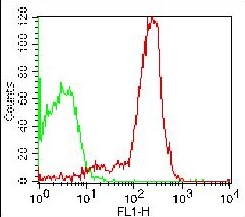Human CD171 / N-CAML1 / L1CAM Recombinant Protein (His Tag)(Discontinued)
Shipping Info:
For estimated delivery dates, please contact us at [email protected]
| Amount : | 200 µg |
| Purification : | > 85 % as determined by SDS-PAGE |
| Content : | Formulation Lyophilized from sterile PBS, pH 7.4 Normally 5 % - 8 % trehalose, mannitol and 0.01% Tween80 are added as protectants before lyophilization. |
| Storage condition : | Store it under sterile conditions at -20°C to -80°C. It is recommended that the protein be aliquoted for optimal storage. Avoid repeated freeze-thaw cycles. |
| AA sequence : | Met1-Glu1120 |
| Alternative Name : | CAML1 Protein, CD171 Protein, HSAS Protein, HSAS1 Protein, MASA Protein, MIC5 Protein, N-CAM-L1 Protein, N-CAML1 Protein, NCAM-L1 Protein, S10 Protein, SPG1 Protein, |
Source : HEK293 Cells
L1 cell adhesion molecule (L1CAM), also designated as CD171, is a cell adhesion receptor of the immunoglobulin superfamily, known for its roles in nerve cell function. While originally believed to be present only in brain cells, in recent years L1-CAM has been detected in other tissues, and in a variety of cancer cells, including some common types of human cancer. L1CAM interacts with a variety of ligands including axonin-1, CD9, neurocan and intergrins, and it has been revealed that the RGD motif in the sixth Ig domain of L1CAM is a binding site for integrins, thus important for nuclear signaling. Disruption of L1CAM function causes three X-linked neurological syndromes, i.e. hydrocephalus, MASA syndrome (mental retardation, aphasia, shuffling gait and adducted thumbs) and spastic paraplegia syndrome. Overexpression of L1CAM in normal and cancer cells increased motility, enhanced growth rate and promoted cell transformation and tumorigenicity. Recent work has identified L1CAM (CD171) as a novel marker for human carcinoma progression, and a candidate for anti-cancer therapy.
Endotoxin :< 1.0 EU per µg of the protein as determined by the LAL method
For Research Use Only. Not for use in diagnostic/therapeutics procedures.
|
There are currently no product reviews
|

















.png)










